
LOADING ...
In response to evolving domestic opinion, eMedals Inc has made the conscious decision to remove the presentation of German Third Reich historical artifacts from our online catalogue. For three decades, eMedals Inc has made an effort to preserve history in all its forms. As historians and researchers, we have managed sensitive articles and materials with the greatest of care and respect for their past and present social context. We acknowledge the growing sentiments put forth by the Canadian public and have taken proactive actions to address this opinion.
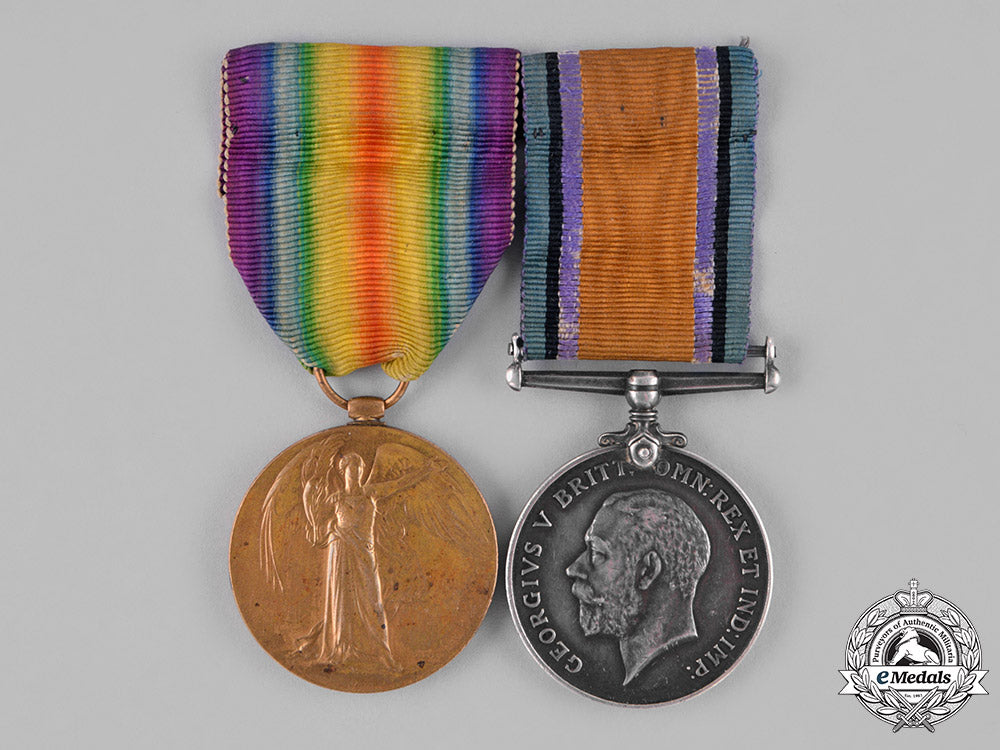
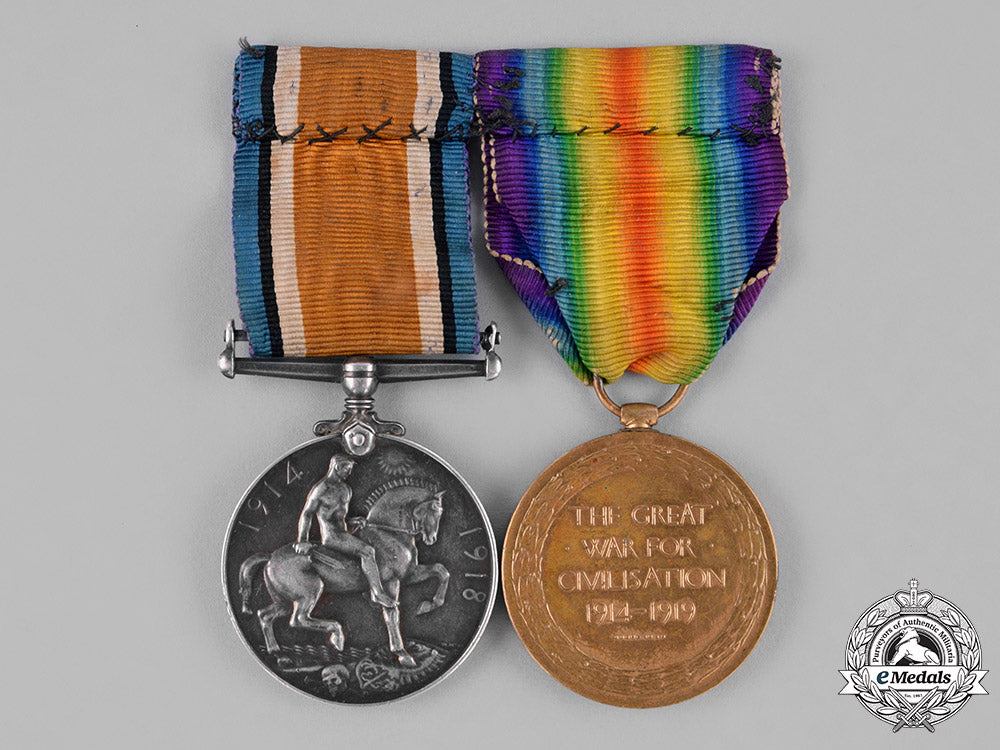
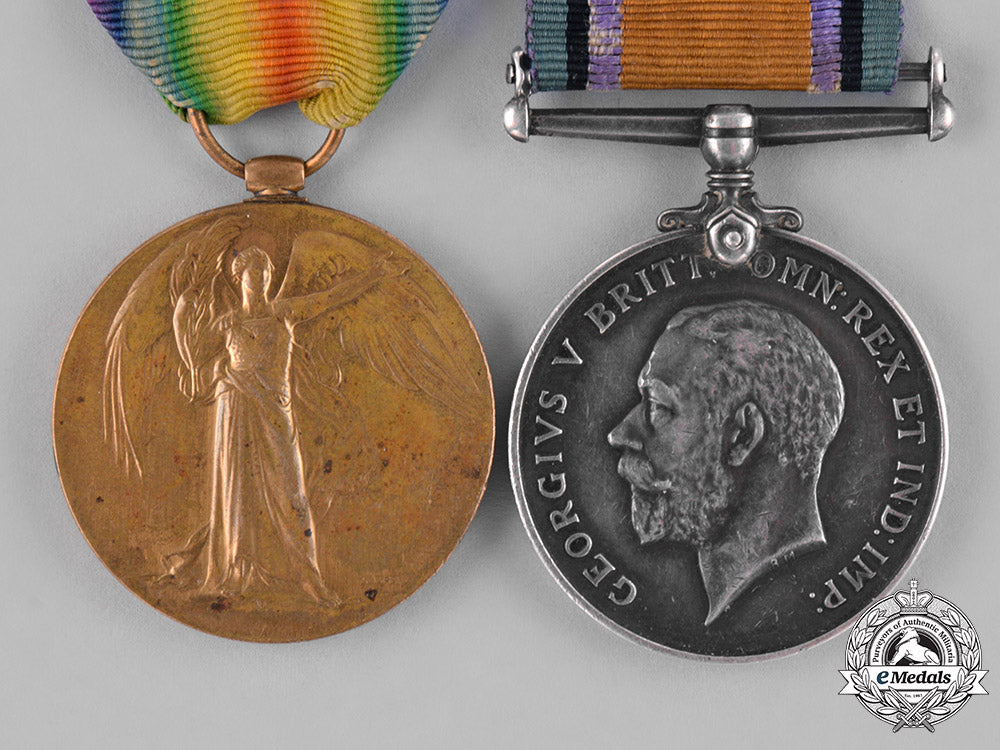
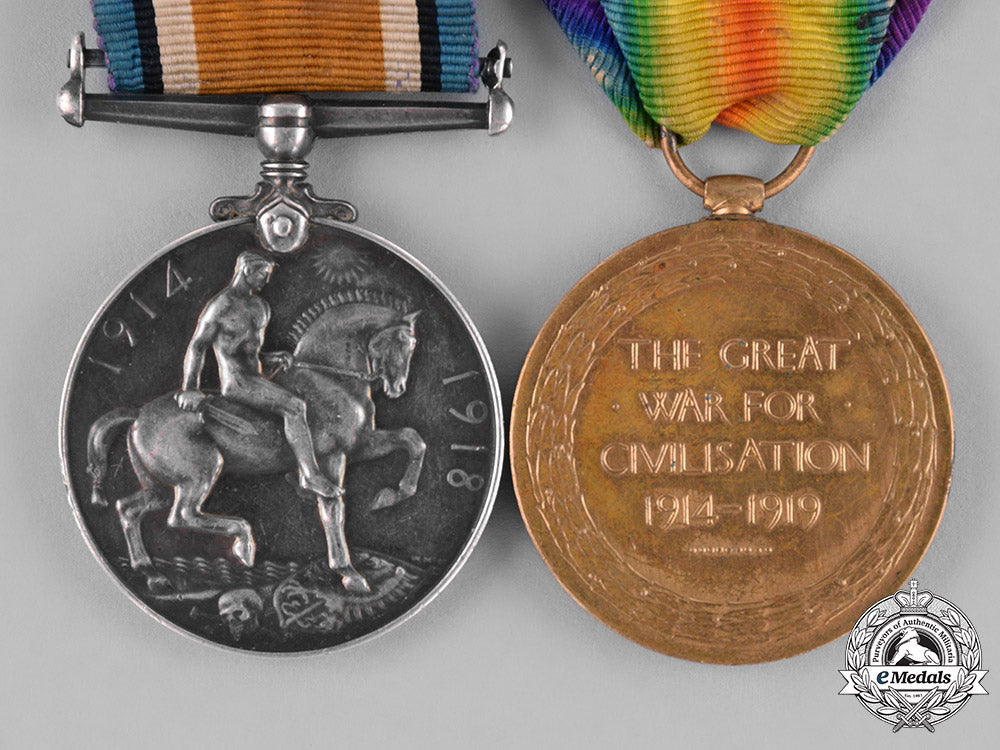
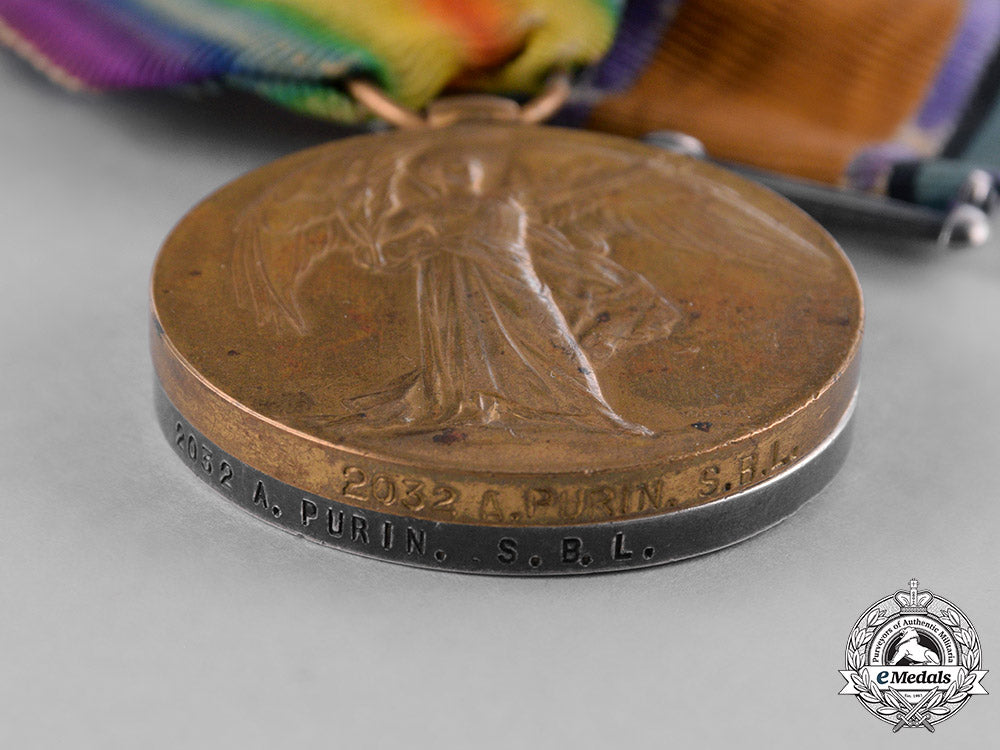
United Kingdom. A Scarce First War Pair To August Purin, Slavo-British Legion
United Kingdom. A Scarce First War Pair To August Purin, Slavo-British Legion
SKU: ITEM: GB6660
0% Buyer's Premium
Current Bid:
Your Max Bid:
Bid History:
Time Remaining:
Couldn't load pickup availability
Shipping Details
Shipping Details
eMedals offers rapid domestic and international shipping. Orders received prior to 12:00pm (EST) will be shipped on the same business day.* Orders placed on Canadian Federal holidays will be dispatched the subsequent business day. Courier tracking numbers are provided for all shipments. All items purchased from eMedals can be returned for a full monetary refund or merchandise credit, providing the criteria presented in our Terms & Conditions are met. *Please note that the addition of a COA may impact dispatch time.
Shipping Details
eMedals offers rapid domestic and international shipping. Orders received prior to 12:00pm (EST) will be shipped on the same business day.* Orders placed on Canadian Federal holidays will be dispatched the subsequent business day. Courier tracking numbers are provided for all shipments. All items purchased from eMedals can be returned for a full monetary refund or merchandise credit, providing the criteria presented in our Terms & Conditions are met. *Please note that the addition of a COA may impact dispatch time.
Description
Description
British War Medal (2032 A. PURIN. S.B.L.); and Victory Medal (2032 A. PURIN. S.B.L). Naming is officially impressed. Mounted to a suspension with swing bar pinback, in reverse order, as worn by the veteran, dark patina on the BWM, spotting on the VM, contact marks on both, very fine. Accompanied by copies of his Medal Rolls from the National Archives
Footnote: The Allied powers were worried that Germany, which had recently sent 55,000 men to a newly independent Finland would attempt to take the vital Russian Ports of Archangel and Murmansk. Seeing this threat, Britain immediately dispatched 100 marines to Murmansk in April of 1918, and then a further force of 350 men in May, which included 16 Canadians. Given that the Russian Civil War could further destabilize Allied aims in the region and reinforced by a general fear of Bolshevism, the Allied Supreme War Council decided in June of 1918 to directly intervene in North Russia. In 1918, the British-led North Russian Expeditionary Force realized they needed local support to defeat the Bolshevik forces in North Russia. Early on, the Expeditionary Force attempted to raise a Slavo-British Legion. The idea was that this Legion would be made up of Russian men who were to fight in British uniforms, under British command. On paper the Legion would comprise 2,500 men. The reality was that after the first onrush of destitute locals seeking easy pay and rations, no other Russian seemed intent on joining. Seeing a looming manpower crisis, General Edmund Ironside, the Commanding General of the Expeditionary Force, welcomed new ideas on raising the strength of the Legion. His staff did not disappoint him. A memorandum to Ironside noted the lack of clothing, weapons, ammunition and Russian men willing to fight on behalf of the white cause, presenting a real challenge to recruitment. However, in the various prisons in Murmansk and Archangel, there resided a preponderance of men who, in the eyes of Ironside and his staff, surely would prefer service to the dreary flea infested prisons.
Ironside was a true imperial soldier and had previously led campaigns and missions on behalf of the British Empire in Persia and Iraq. Yet it was in North Russia that he faced his most daunting task. Ironside held command over a multi-national force made up of British, Canadians, Australians, French, Italians, Americans, Serbians, Finns and White Russians (a diverse group of anti-Bolshevik forces). Many of these forces disliked and distrusted each other. American soldiers thought the British to be "weedy and scrawny looking" and therefore only good for garrison duty. The British thought the French were a "band of strikers and shirkers", while the Russians hated every nationality of the expeditionary force equally. Compounding this lack of cohesion and local trust was the clear fact that Ironside needed the Russian population to join the Expedition. He needed to raise local units to fight the Bolsheviks. The reality was however, that many of the Russian men wanted no part of the British led expedition but he hoped men like Canadian Sergeant Royce Coleman Dyer might change this. Dyer was born on February 1, 1889 in Sutton, Quebec, the son of Leon Eugene Dyer (1861-1931) and Mae Evangline Cutter Dyer (1866-1907). He was a butcher when he enlisted with the 8th Infantry Battalion "Black Devils", on September 23, 1914 at Valcartier, Quebec. Dyer's wartime record was marked with hospital stays and extreme actions of valour. Early on he was wounded by a gas attack while with 'C' Company at the Second Battle of Ypres. After being discharged from the hospital, Dyer rejoined the 8th Infantry Battalion and was awarded the Military Medal for gallantry for actions at the Battle of Mount Sorrel in June 1916. 445 Private Royce Coleman Dyer, 8th Infantry Battalion was awarded the Military Medal, the announcement appearing in the Second Supplement to the London Gazette 29780 of Tuesday, October 10, 1916, on Wednesday, October 11, 1916, page 9838. Shortly after this he was awarded a Bar to the Military Medal for actions during the Somme, where he was again wounded, when he broke a rib during a seizure of an enemy trench. 445 Private Dyer, 8th Infantry Battalion was was awarded the Bar to the Military Medal, the announcement appearing in the Third Supplement of the London Gazette 29873 of Tuesday, December 14, 1916, on Thursday, December 21, 1916, page 12449. Dyer's younger brother, Charles Dyer, had been killed near Vimy in the winter of 1917, weeks after arriving at the front with the Royal Montreal Regiment. Rising in rank from Private to Sergeant during this time Royce Dyer was frequently praised for his devotion to duty. His tour came to an end though when he was wounded for a third time in early 1918, due to a bullet to the torso.
While recovering in England in June 1918, Dyer was approached by Ironside about joining the Special Service Force. Sensing an adventure, he jumped at the opportunity and joined ELOPE force gong to Russia. Ironside had come to be very fond of Dyer and offered him the command of the First Battalion of prisoners and a promotion to Lieutenant (later Captain), which Dyer happily accepted. He immediately set about his tasks, with the first one being the recruitment of prisoners. His aim was to train them to British standards of drill and discipline, and hopefully insert them into the front lines, to replace Allied forces. If Dyer succeeded in his task, the process was to repeat itself until the prisons were empty and the front lines were manned with Russians. Dyer immediately set about his assignment, working vigorously. Offering prisoners parole and a chance to serve the British-approved Russian Government, Dyer managed to recruit just under three hundred prisoners. As many of the prisoners had been jailed for being suspected Bolsheviks, Dyer set out to separate the diehard ones from the others. He set up a classification system that put the prisoner recruits into three sections: "bads", "less-bads", and "probably harmless". After purging the "bads", Dyer instituted propaganda lectures that attempted to convince the prisoners of the rightness of loyalty to the old regime. He also began to implement military discipline with his new recruits. Thankfully for Dyer, he was given a cadre of fifteen Canadian, British, and Australian NCOs and three British officers to help bring about uniformity and discipline with the battalion. The new battalion seemed to take immediately to Lieutenant Dyer, calling themselves "Dyer’s Battalion". Real progress was made within the first three months, as the unit drilled relentlessly, practiced disciplined fire, and even promoted a few Russians to be officers. During an inspection of the unit in mid-December, General Ironside was delighted at Dyer's progress. Gone were the prisoner rags and rampant indiscipline. Now a professional group of soldiers drilled smartly and showed proper discipline in crisp new uniforms. This had been accomplished because of Dyer's insistence of weeding out those he called the "bads". In his opinion, they were deceptive and most likely prone to Bolshevik tendencies. With them gone, the unit had a chance. Likewise, the men had begun to see Dyer as an icon of bravery and leadership. In the frequent reports about the Battalion, the one constant was the Russian soldiers' fascination with the now Captain Dyer. After the inspection tour, General Ironside cabled London stating that new Slavo-British Legion units were to be formed based off of Dyer's Battalion. In many ways, the Battalion had come to be seen as a grand success by the British-led mission, on which further accomplishments could be built. By the time Dyer arrived in Archangel with ELOPE force, the Russian Civil War was in full force. Early on, the Bolsheviks controlled much of the territory around Murmansk and Archangel. The first task for the North Russian Expeditionary Force was to form a defensive barrier around the two ports. In order to do this many of the surrounding villages and hills needed to be taken from the entrenched Bolsheviks. Dyer and the other men of the Special Service Force were tasked with taking the village of Oniga. Dyer marked himself in this action when he stormed several dug-in machine nests almost single handily carrying a lone Lewis machine gun. Impressed by Dyer's actions, General Edmund Ironside, the Commanding General of the Expeditionary Force, awarded Sergeant Dyer with the Distinguished Conduct Medal and a field promotion to Lieutenant. 445 Acting Sergeant, MM and Bar, 8th Infantry Battalion, Canadian Infantry (Northern Russia) was awarded the Distinguished Conduct Medal, the announcement appearing in the Fifth Supplement to the London Gazette 31128 of Tuesday, January 14, 1919, on Thursday, January 16, 1919, page 851, his citation stating: "For conspicuous gallantry and resource during the landing at Onega and clearing of the town. He set a verv fine example to his men throughout the action, and, from a very exposed position, successfully engaged an enemy machine-gun at close range with his Lewis gun.
He showed marked courage in taking up new positions with his gun under heavy machine-gun and cross rifle fire, and by his skilful use of it rendered very valuable service". To many, Dyer's Battalion seemed on track to live up to Ironside’s hope of an indigenous-manned fighting unit when disaster struck. On December 27, 1918, Dyer was admitted to the 82nd Casualty Clearing Station in Bakharitza suffering from fever. He was quickly diagnosed with broncho-pneumonia and succumbed to it three days later, on December 30, 1918, at the age of 29. He is commemorated on page 586 of the First World War Book of Remembrance and is buried in Archangel Allied Cemetery, Russian Federation, Grave Reference: E. 6., the cemetery located on the north-west outskirts of the town of Archangel, adjoining the Lutheran and Russian Cemeteries. He is also memorialized at Fairmount Cemetery in Sutton, Monteregie Region, Quebec. Dyer was posthumously acknowledged for appointment to the rank of Captain almost three years after his death, the announcement appearing in the Second Supplement to the London Gazette 32446 of Friday, September 2, 1921, on Monday, September 5, 1921, page 7042: "Temporary Second Lieutenant Dyer, DCM, MM (since: dead), to be Temporary Captain "whilst specially employed", effective October 16, 1918. In addition to the Distinguished Conduct Medal and the Military Medal with Bar, Captain Dyer was awarded the 1914-15 Star, the British War Medal, the Victory Medal, along with the Russian Order of St. George 4th Class. Dyer's Battalion was devastated by the news of his death. Although the other Allied officers and NCOs in the unit were able, none of them had the personality and charisma that connected Dyer to his men. So enthralled were the soldiers with their former Commanding Officer that they took to carrying a massive portrait of Dyer, in the Eastern Orthodox tradition of an Icon, whenever they paraded. Dyer's legacy was ultimately not enough to keep the Battalion together. Ignoring Dyer's lessons about the "bads", it was decided that a further 100 Bolshevik deserters would augment the unit in order to bring it up to full strength. None of the checks or weeding-out processes Dyer had implemented were followed and soon indiscipline began to break out. A full six months after Dyer's death, his Battalion was finally ordered up en-masse to take over a section of the front line. Many Allied officers had their doubts, believing that desertion would sap the strength of the Battalion once on the front. What happened was far worse. At 2:30 in the morning of July 7, 1919, or the first night on the front line, a mutiny took place. The mutineers had fixed their bayonets and had even brought forward a light machine gun. In silence, they gathered near the officers’ quarters where their Britishofficers were fast asleep. Suddenly a shout broke out in the distance and the men realized it was now or never. They aimed their rifles and the machine gun and unleashed a volley of bullets into the officer’s tents. Hearing the muffled cries of the officers inside, the mutineers quickly rushed into the tent bayoneting any of the officers who had survived the volley. Even then, one of their intended targets, though wounded, had escaped. Crawling and stumbling through the bushes, a young Lieutenant made his way to a nearby river. There he swam to a moored Allied boat where he raised the alarm that a mutiny had broken out in his unit, Dyer's Battalion. Soon after this, the young Lieutenant succumbed to his wounds. A mass defection to the Bolsheviks lines began. By the time nearby Australian units had re-imposed order to the front and captured the remaining mutineers, the damage to the battalion and the expedition as a whole had been done. Of the forty captured mutineers, twelve were sentenced to death in a flying court martial. They were tied to stakes and machine gunned by the remaining Dyer’s Battalion men who had not mutinied, as British soldiers with fixed bayonets looked on.
Tellingly, in case they turned on the British, only five rounds had been issued to each gun crew. General Ironside was particularly affected by the mutiny, stating in his diary that, "I now felt a distinct urge to extricate myself and my troops as quickly as I could". Shortly after the mutiny, the Canadian government decided to bring home the remaining Canadians. They first withdrew the Siberian Expeditionary Force, which included the men who had been sent to Omsk. Then following a phased withdrawal in North Russia. By September 1919, all Canadians, including the artillery brigade and the Special Service Force that Dyer had arrived with, had been evacuated. Seeing Canadians and other allies abandon the expedition in North Russia, the British withdrew the following month. Surprisingly, the saga of the mutiny in Dyer's Battalion did not cease with the disbandment of the North Russian Expedition Force. The British Army refused to forget that their officers had been murdered in cold blood. By interrogating the remaining mutineers and employing spies behind Bolshevik lines, a list of eight names were identified, representing the ring leaders of the mutiny. An internal British military intelligence memo summed up the mutiny by stating that: "the names of these Russians should be carefully recorded and never lost sight of. They are guilty of the blackest treachery conceivable, and if our affairs with Russia should at any time in the next five or ten years reach a condition when it is possible for us to demand their exemplary punishment, we must not fail to do so". In 1920, it seemed like the British may have their chance to reap revenge. The newly created Soviet Union suffered a massive defeat, outside of Warsaw, against the Polish army. Over 150,000 Soviets had been captured. The British Director of Military Intelligence discreetly sent out groups of British officers to Polish and German internment camps that housed the recently surrendered Russians, in order to find the eight ringleaders. Over the course of six months they searched dozens of internment camps in vain. After many false leads, they were forced to conclude that there was a slim chance of ever finding the ringleaders of the Dyer's Battalion mutiny.
Description
British War Medal (2032 A. PURIN. S.B.L.); and Victory Medal (2032 A. PURIN. S.B.L). Naming is officially impressed. Mounted to a suspension with swing bar pinback, in reverse order, as worn by the veteran, dark patina on the BWM, spotting on the VM, contact marks on both, very fine. Accompanied by copies of his Medal Rolls from the National Archives
Footnote: The Allied powers were worried that Germany, which had recently sent 55,000 men to a newly independent Finland would attempt to take the vital Russian Ports of Archangel and Murmansk. Seeing this threat, Britain immediately dispatched 100 marines to Murmansk in April of 1918, and then a further force of 350 men in May, which included 16 Canadians. Given that the Russian Civil War could further destabilize Allied aims in the region and reinforced by a general fear of Bolshevism, the Allied Supreme War Council decided in June of 1918 to directly intervene in North Russia. In 1918, the British-led North Russian Expeditionary Force realized they needed local support to defeat the Bolshevik forces in North Russia. Early on, the Expeditionary Force attempted to raise a Slavo-British Legion. The idea was that this Legion would be made up of Russian men who were to fight in British uniforms, under British command. On paper the Legion would comprise 2,500 men. The reality was that after the first onrush of destitute locals seeking easy pay and rations, no other Russian seemed intent on joining. Seeing a looming manpower crisis, General Edmund Ironside, the Commanding General of the Expeditionary Force, welcomed new ideas on raising the strength of the Legion. His staff did not disappoint him. A memorandum to Ironside noted the lack of clothing, weapons, ammunition and Russian men willing to fight on behalf of the white cause, presenting a real challenge to recruitment. However, in the various prisons in Murmansk and Archangel, there resided a preponderance of men who, in the eyes of Ironside and his staff, surely would prefer service to the dreary flea infested prisons.
Ironside was a true imperial soldier and had previously led campaigns and missions on behalf of the British Empire in Persia and Iraq. Yet it was in North Russia that he faced his most daunting task. Ironside held command over a multi-national force made up of British, Canadians, Australians, French, Italians, Americans, Serbians, Finns and White Russians (a diverse group of anti-Bolshevik forces). Many of these forces disliked and distrusted each other. American soldiers thought the British to be "weedy and scrawny looking" and therefore only good for garrison duty. The British thought the French were a "band of strikers and shirkers", while the Russians hated every nationality of the expeditionary force equally. Compounding this lack of cohesion and local trust was the clear fact that Ironside needed the Russian population to join the Expedition. He needed to raise local units to fight the Bolsheviks. The reality was however, that many of the Russian men wanted no part of the British led expedition but he hoped men like Canadian Sergeant Royce Coleman Dyer might change this. Dyer was born on February 1, 1889 in Sutton, Quebec, the son of Leon Eugene Dyer (1861-1931) and Mae Evangline Cutter Dyer (1866-1907). He was a butcher when he enlisted with the 8th Infantry Battalion "Black Devils", on September 23, 1914 at Valcartier, Quebec. Dyer's wartime record was marked with hospital stays and extreme actions of valour. Early on he was wounded by a gas attack while with 'C' Company at the Second Battle of Ypres. After being discharged from the hospital, Dyer rejoined the 8th Infantry Battalion and was awarded the Military Medal for gallantry for actions at the Battle of Mount Sorrel in June 1916. 445 Private Royce Coleman Dyer, 8th Infantry Battalion was awarded the Military Medal, the announcement appearing in the Second Supplement to the London Gazette 29780 of Tuesday, October 10, 1916, on Wednesday, October 11, 1916, page 9838. Shortly after this he was awarded a Bar to the Military Medal for actions during the Somme, where he was again wounded, when he broke a rib during a seizure of an enemy trench. 445 Private Dyer, 8th Infantry Battalion was was awarded the Bar to the Military Medal, the announcement appearing in the Third Supplement of the London Gazette 29873 of Tuesday, December 14, 1916, on Thursday, December 21, 1916, page 12449. Dyer's younger brother, Charles Dyer, had been killed near Vimy in the winter of 1917, weeks after arriving at the front with the Royal Montreal Regiment. Rising in rank from Private to Sergeant during this time Royce Dyer was frequently praised for his devotion to duty. His tour came to an end though when he was wounded for a third time in early 1918, due to a bullet to the torso.
While recovering in England in June 1918, Dyer was approached by Ironside about joining the Special Service Force. Sensing an adventure, he jumped at the opportunity and joined ELOPE force gong to Russia. Ironside had come to be very fond of Dyer and offered him the command of the First Battalion of prisoners and a promotion to Lieutenant (later Captain), which Dyer happily accepted. He immediately set about his tasks, with the first one being the recruitment of prisoners. His aim was to train them to British standards of drill and discipline, and hopefully insert them into the front lines, to replace Allied forces. If Dyer succeeded in his task, the process was to repeat itself until the prisons were empty and the front lines were manned with Russians. Dyer immediately set about his assignment, working vigorously. Offering prisoners parole and a chance to serve the British-approved Russian Government, Dyer managed to recruit just under three hundred prisoners. As many of the prisoners had been jailed for being suspected Bolsheviks, Dyer set out to separate the diehard ones from the others. He set up a classification system that put the prisoner recruits into three sections: "bads", "less-bads", and "probably harmless". After purging the "bads", Dyer instituted propaganda lectures that attempted to convince the prisoners of the rightness of loyalty to the old regime. He also began to implement military discipline with his new recruits. Thankfully for Dyer, he was given a cadre of fifteen Canadian, British, and Australian NCOs and three British officers to help bring about uniformity and discipline with the battalion. The new battalion seemed to take immediately to Lieutenant Dyer, calling themselves "Dyer’s Battalion". Real progress was made within the first three months, as the unit drilled relentlessly, practiced disciplined fire, and even promoted a few Russians to be officers. During an inspection of the unit in mid-December, General Ironside was delighted at Dyer's progress. Gone were the prisoner rags and rampant indiscipline. Now a professional group of soldiers drilled smartly and showed proper discipline in crisp new uniforms. This had been accomplished because of Dyer's insistence of weeding out those he called the "bads". In his opinion, they were deceptive and most likely prone to Bolshevik tendencies. With them gone, the unit had a chance. Likewise, the men had begun to see Dyer as an icon of bravery and leadership. In the frequent reports about the Battalion, the one constant was the Russian soldiers' fascination with the now Captain Dyer. After the inspection tour, General Ironside cabled London stating that new Slavo-British Legion units were to be formed based off of Dyer's Battalion. In many ways, the Battalion had come to be seen as a grand success by the British-led mission, on which further accomplishments could be built. By the time Dyer arrived in Archangel with ELOPE force, the Russian Civil War was in full force. Early on, the Bolsheviks controlled much of the territory around Murmansk and Archangel. The first task for the North Russian Expeditionary Force was to form a defensive barrier around the two ports. In order to do this many of the surrounding villages and hills needed to be taken from the entrenched Bolsheviks. Dyer and the other men of the Special Service Force were tasked with taking the village of Oniga. Dyer marked himself in this action when he stormed several dug-in machine nests almost single handily carrying a lone Lewis machine gun. Impressed by Dyer's actions, General Edmund Ironside, the Commanding General of the Expeditionary Force, awarded Sergeant Dyer with the Distinguished Conduct Medal and a field promotion to Lieutenant. 445 Acting Sergeant, MM and Bar, 8th Infantry Battalion, Canadian Infantry (Northern Russia) was awarded the Distinguished Conduct Medal, the announcement appearing in the Fifth Supplement to the London Gazette 31128 of Tuesday, January 14, 1919, on Thursday, January 16, 1919, page 851, his citation stating: "For conspicuous gallantry and resource during the landing at Onega and clearing of the town. He set a verv fine example to his men throughout the action, and, from a very exposed position, successfully engaged an enemy machine-gun at close range with his Lewis gun.
He showed marked courage in taking up new positions with his gun under heavy machine-gun and cross rifle fire, and by his skilful use of it rendered very valuable service". To many, Dyer's Battalion seemed on track to live up to Ironside’s hope of an indigenous-manned fighting unit when disaster struck. On December 27, 1918, Dyer was admitted to the 82nd Casualty Clearing Station in Bakharitza suffering from fever. He was quickly diagnosed with broncho-pneumonia and succumbed to it three days later, on December 30, 1918, at the age of 29. He is commemorated on page 586 of the First World War Book of Remembrance and is buried in Archangel Allied Cemetery, Russian Federation, Grave Reference: E. 6., the cemetery located on the north-west outskirts of the town of Archangel, adjoining the Lutheran and Russian Cemeteries. He is also memorialized at Fairmount Cemetery in Sutton, Monteregie Region, Quebec. Dyer was posthumously acknowledged for appointment to the rank of Captain almost three years after his death, the announcement appearing in the Second Supplement to the London Gazette 32446 of Friday, September 2, 1921, on Monday, September 5, 1921, page 7042: "Temporary Second Lieutenant Dyer, DCM, MM (since: dead), to be Temporary Captain "whilst specially employed", effective October 16, 1918. In addition to the Distinguished Conduct Medal and the Military Medal with Bar, Captain Dyer was awarded the 1914-15 Star, the British War Medal, the Victory Medal, along with the Russian Order of St. George 4th Class. Dyer's Battalion was devastated by the news of his death. Although the other Allied officers and NCOs in the unit were able, none of them had the personality and charisma that connected Dyer to his men. So enthralled were the soldiers with their former Commanding Officer that they took to carrying a massive portrait of Dyer, in the Eastern Orthodox tradition of an Icon, whenever they paraded. Dyer's legacy was ultimately not enough to keep the Battalion together. Ignoring Dyer's lessons about the "bads", it was decided that a further 100 Bolshevik deserters would augment the unit in order to bring it up to full strength. None of the checks or weeding-out processes Dyer had implemented were followed and soon indiscipline began to break out. A full six months after Dyer's death, his Battalion was finally ordered up en-masse to take over a section of the front line. Many Allied officers had their doubts, believing that desertion would sap the strength of the Battalion once on the front. What happened was far worse. At 2:30 in the morning of July 7, 1919, or the first night on the front line, a mutiny took place. The mutineers had fixed their bayonets and had even brought forward a light machine gun. In silence, they gathered near the officers’ quarters where their Britishofficers were fast asleep. Suddenly a shout broke out in the distance and the men realized it was now or never. They aimed their rifles and the machine gun and unleashed a volley of bullets into the officer’s tents. Hearing the muffled cries of the officers inside, the mutineers quickly rushed into the tent bayoneting any of the officers who had survived the volley. Even then, one of their intended targets, though wounded, had escaped. Crawling and stumbling through the bushes, a young Lieutenant made his way to a nearby river. There he swam to a moored Allied boat where he raised the alarm that a mutiny had broken out in his unit, Dyer's Battalion. Soon after this, the young Lieutenant succumbed to his wounds. A mass defection to the Bolsheviks lines began. By the time nearby Australian units had re-imposed order to the front and captured the remaining mutineers, the damage to the battalion and the expedition as a whole had been done. Of the forty captured mutineers, twelve were sentenced to death in a flying court martial. They were tied to stakes and machine gunned by the remaining Dyer’s Battalion men who had not mutinied, as British soldiers with fixed bayonets looked on.
Tellingly, in case they turned on the British, only five rounds had been issued to each gun crew. General Ironside was particularly affected by the mutiny, stating in his diary that, "I now felt a distinct urge to extricate myself and my troops as quickly as I could". Shortly after the mutiny, the Canadian government decided to bring home the remaining Canadians. They first withdrew the Siberian Expeditionary Force, which included the men who had been sent to Omsk. Then following a phased withdrawal in North Russia. By September 1919, all Canadians, including the artillery brigade and the Special Service Force that Dyer had arrived with, had been evacuated. Seeing Canadians and other allies abandon the expedition in North Russia, the British withdrew the following month. Surprisingly, the saga of the mutiny in Dyer's Battalion did not cease with the disbandment of the North Russian Expedition Force. The British Army refused to forget that their officers had been murdered in cold blood. By interrogating the remaining mutineers and employing spies behind Bolshevik lines, a list of eight names were identified, representing the ring leaders of the mutiny. An internal British military intelligence memo summed up the mutiny by stating that: "the names of these Russians should be carefully recorded and never lost sight of. They are guilty of the blackest treachery conceivable, and if our affairs with Russia should at any time in the next five or ten years reach a condition when it is possible for us to demand their exemplary punishment, we must not fail to do so". In 1920, it seemed like the British may have their chance to reap revenge. The newly created Soviet Union suffered a massive defeat, outside of Warsaw, against the Polish army. Over 150,000 Soviets had been captured. The British Director of Military Intelligence discreetly sent out groups of British officers to Polish and German internment camps that housed the recently surrendered Russians, in order to find the eight ringleaders. Over the course of six months they searched dozens of internment camps in vain. After many false leads, they were forced to conclude that there was a slim chance of ever finding the ringleaders of the Dyer's Battalion mutiny.

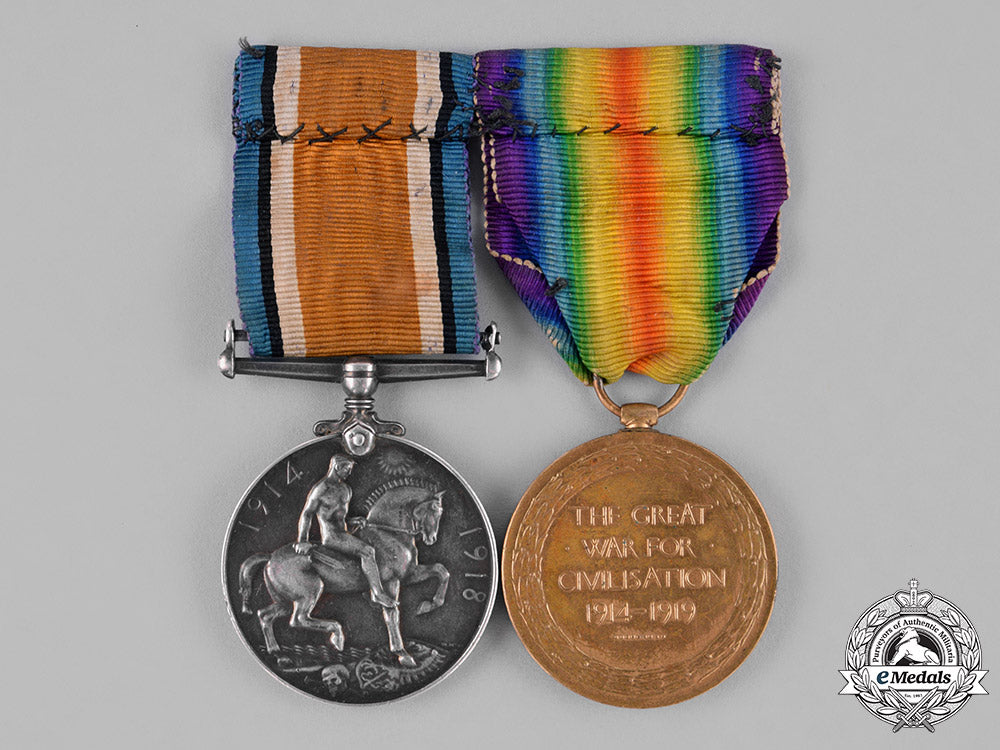
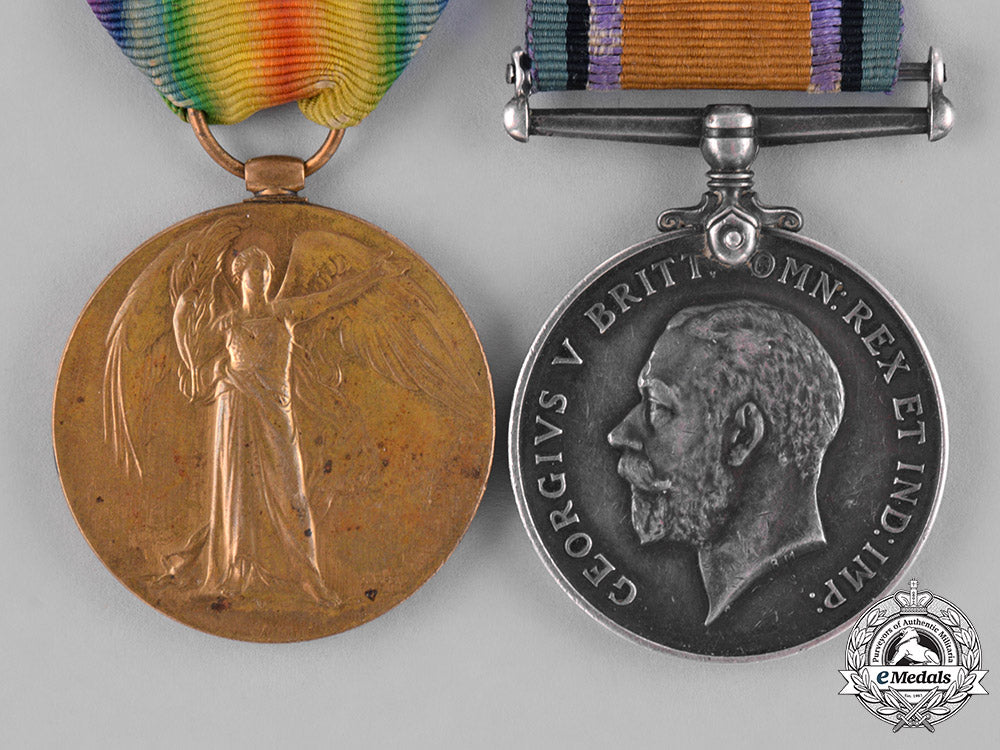
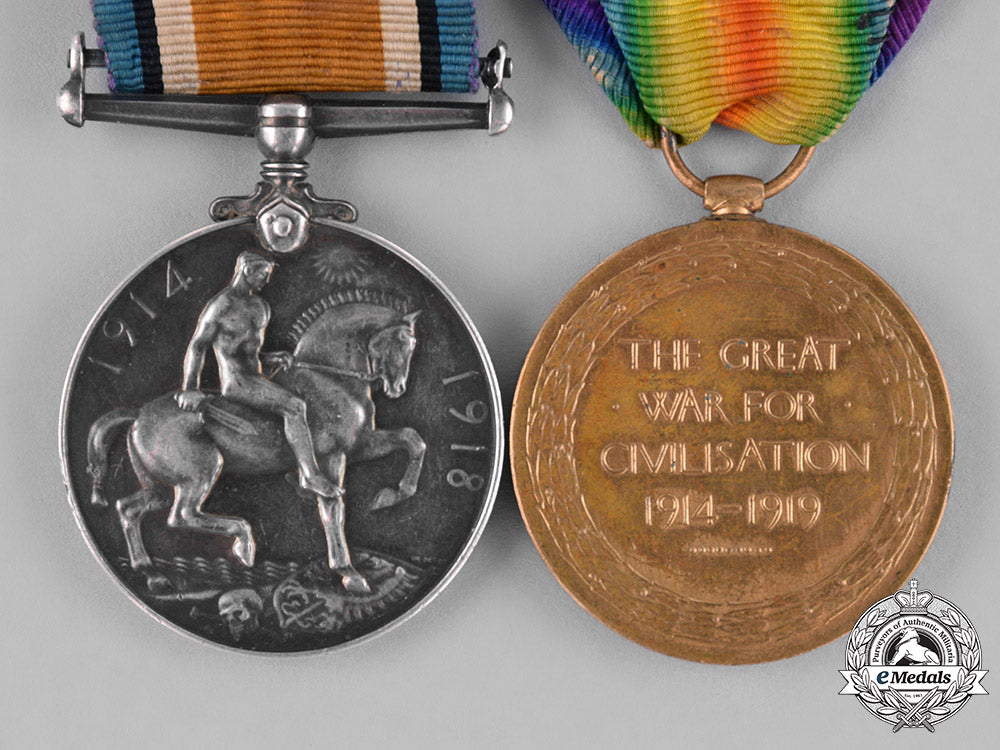
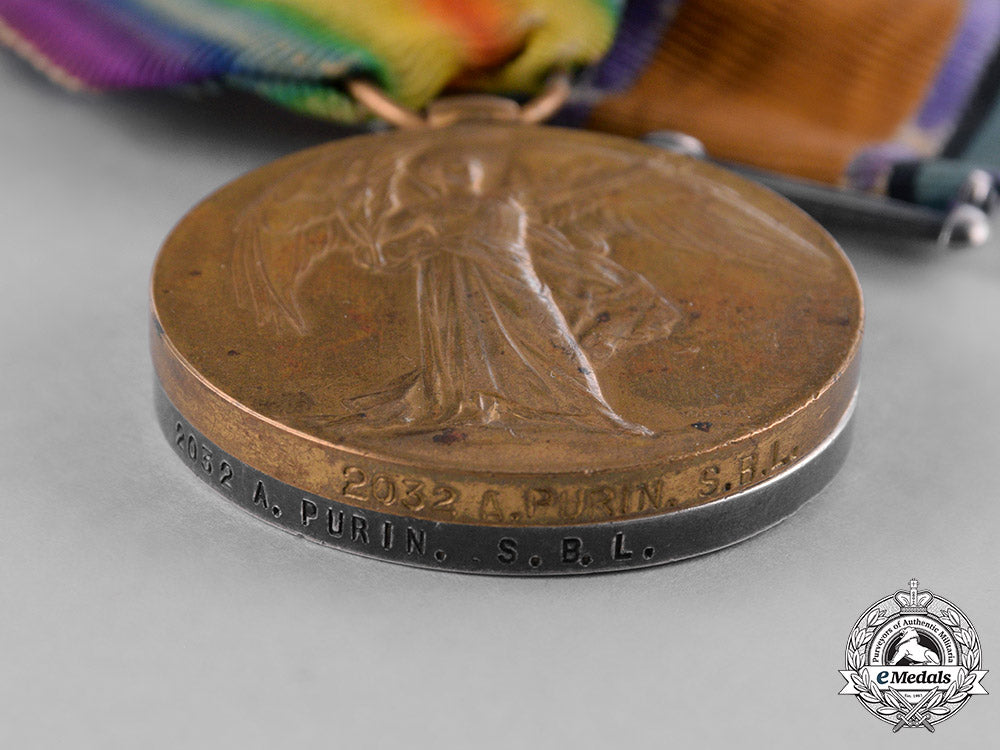
You May Also Like
Germany, SA. A Model 1933 Service Dagger, SA-Gruppe Nordsee, by Friedrich von der Kohlen
G59818
Germany, SA. A Model 1933 Service Dagger, SA-Gruppe Pommern, by Gustav Wirth
G59816
Germany, Third Reich. A Mixed Lot of Tyrolean Marksmanship Badges
G52930
Germany, SS. An Estonian Waffen-SS Volunteer’s Sleeve Shield
G50381
Germany, SS. A Waffen-SS Sturmmann Sleeve Insignia
G52846
-
Germany, SA. A Model 1933 Service Dagger, SA-Gruppe Nordsee, by Friedrich von der Kohlen
G59818
Add to CartRegular price $980 USDRegular price $0 USD Sale price $980 USDUnit price / per -
Germany, SA. A Model 1933 Service Dagger, SA-Gruppe Pommern, by Gustav Wirth
G59816
Add to CartRegular price $980 USDRegular price $0 USD Sale price $980 USDUnit price / per -
Germany, Third Reich. A Mixed Lot of Tyrolean Marksmanship Badges
G52930
Add to CartRegular price $135 USDRegular price $0 USD Sale price $135 USDUnit price / per -
Germany, SS. An Estonian Waffen-SS Volunteer’s Sleeve Shield
G50381
Add to CartRegular price $150 USDRegular price $0 USD Sale price $150 USDUnit price / per -
Germany, SS. A Waffen-SS Sturmmann Sleeve Insignia
G52846
Add to CartRegular price $135 USDRegular price $0 USD Sale price $135 USDUnit price / per
Do you have a similar item you are interested in selling?
Please complete the form and our client care representatives will contact you.
Sell Item














